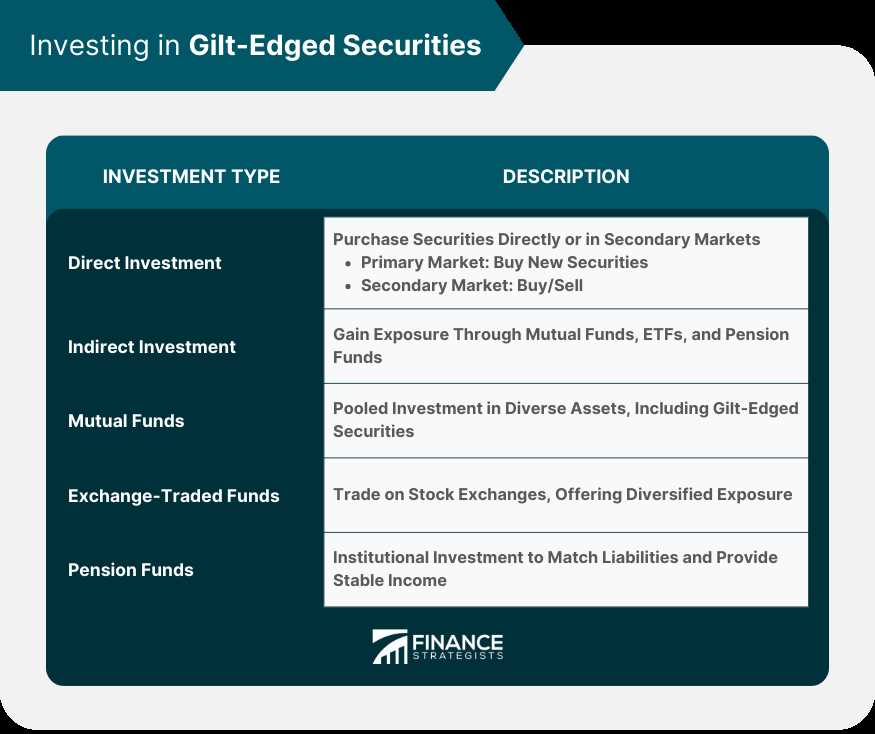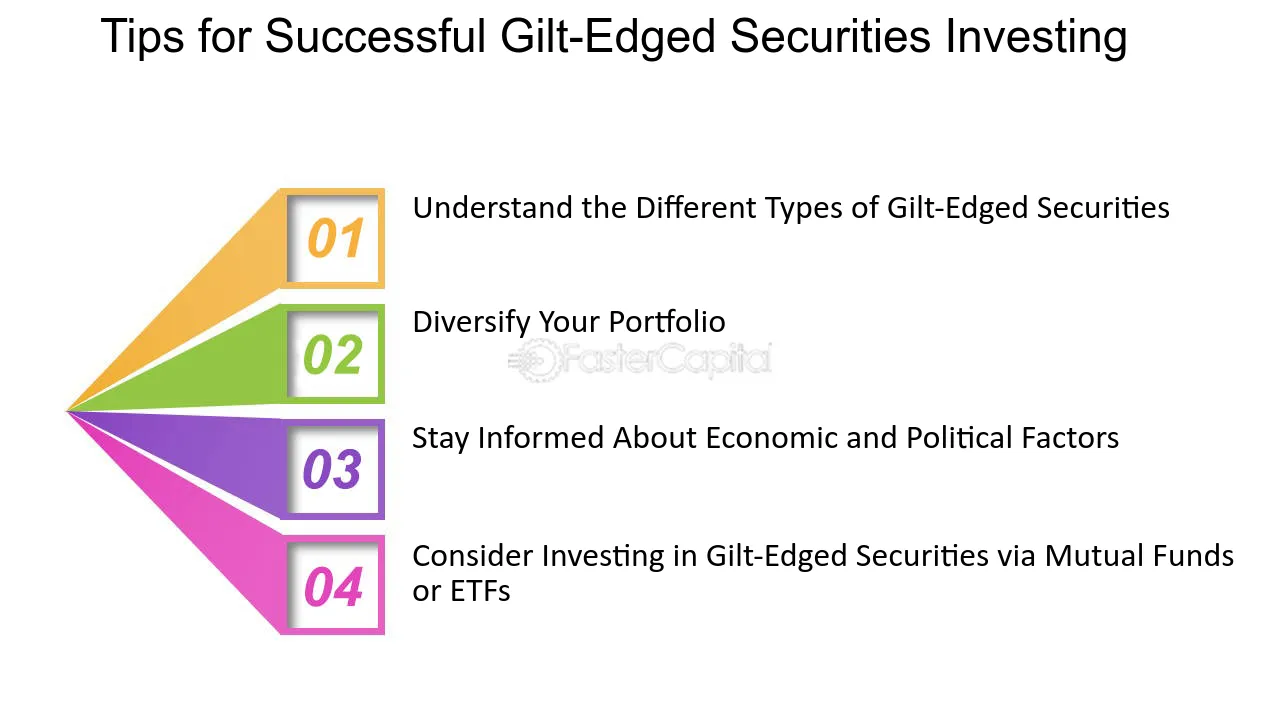Gilt-Edged Securities: All You Need to Know

What are Gilt-Edged Securities?
Gilt-edged securities are bonds that are issued by the government. They are called “gilt-edged” because they are considered to be as safe and secure as gold. These securities are typically issued with a fixed interest rate and a maturity date. They are considered to be one of the safest investments available because they are backed by the government, which means that the chances of default are extremely low.
Benefits of Investing in Gilt-Edged Securities
There are several benefits to investing in gilt-edged securities. First and foremost, these securities are considered to be very safe and low risk. This makes them an attractive investment option for conservative investors who are looking to preserve their capital.
Secondly, gilt-edged securities offer a fixed interest rate, which means that investors know exactly how much income they will earn from their investment. This can be particularly beneficial for retirees or individuals who rely on a steady income stream.
Lastly, gilt-edged securities are highly liquid, which means that they can be easily bought and sold on the secondary market. This provides investors with the flexibility to exit their investment if needed.
Risks of Investing in Gilt-Edged Securities
While gilt-edged securities are considered to be very safe, they are not without risks. One of the main risks is the risk of inflation. If inflation rises, the fixed interest rate on these securities may not keep up with the rising cost of living, which can erode the purchasing power of the investor’s income.
Another risk is the risk of interest rate changes. If interest rates rise, the value of existing gilt-edged securities may decrease, as investors may prefer to invest in higher-yielding securities. This can result in capital losses for investors who need to sell their securities before maturity.
What are Gilt-Edged Securities?

Characteristics of Gilt-Edged Securities
Gilt-edged securities have several key characteristics that make them attractive to investors:
- Low risk: Gilt-edged securities are considered to be one of the safest investments available. The creditworthiness of the government backing the bonds provides a high level of security for investors.
- Stable income: Gilt-edged securities typically offer fixed interest payments, providing investors with a stable and predictable income stream.
- Liquidity: Gilt-edged securities are highly liquid, meaning they can be easily bought and sold on the secondary market. This allows investors to quickly convert their investments into cash if needed.
- Diversification: Gilt-edged securities can be used as a diversification tool within an investment portfolio. By including these bonds, investors can reduce risk and potentially increase returns.
- Tax advantages: In some countries, the interest earned from gilt-edged securities may be tax-exempt or subject to favorable tax treatment, providing additional benefits to investors.
Types of Gilt-Edged Securities
There are several types of gilt-edged securities that investors can choose from:
| Type | Description |
|---|---|
| Treasury bills | Short-term debt securities with maturities of less than one year. |
| Treasury notes | Medium-term debt securities with maturities ranging from one to ten years. |
| Treasury bonds | Long-term debt securities with maturities of ten years or more. |
Investors can choose the type of gilt-edged security that best suits their investment goals and risk tolerance.
Conclusion
Gilt-edged securities are a popular investment choice for those seeking a low-risk, stable income stream. These bonds offer a high level of security due to the creditworthiness of the government issuing them. With their low risk, stable income, and potential tax advantages, gilt-edged securities can be a valuable addition to an investment portfolio.
Benefits and Risks of Investing in Gilt-Edged Securities
Benefits of Investing in Gilt-Edged Securities
1. Safety: Gilt-edged securities are considered one of the safest investments available. They are issued by governments with excellent credit ratings, making them less likely to default on their payments. This safety factor makes gilt-edged securities an attractive option for risk-averse investors.
3. Diversification: Including gilt-edged securities in an investment portfolio can help diversify risk. They have a low correlation with other asset classes, such as stocks and corporate bonds, which means their performance is not heavily influenced by market fluctuations. This diversification can help reduce overall portfolio risk.
Risks of Investing in Gilt-Edged Securities
2. Interest Rate Risk: Gilt-edged securities are sensitive to changes in interest rates. When interest rates rise, the value of existing bonds decreases, which can result in capital losses for investors who wish to sell before maturity. This interest rate risk can affect the overall performance of a gilt-edged securities investment.
3. Inflation Risk: Gilt-edged securities are also exposed to inflation risk. Inflation erodes the purchasing power of future interest and principal payments, which can reduce the real return on investment. Investors should consider the potential impact of inflation on their gilt-edged securities holdings.
Overall, investing in gilt-edged securities can provide safety, regular income, and diversification benefits. However, investors should be aware of the potential drawbacks, such as lower returns, interest rate risk, and inflation risk. It is important to carefully assess these factors and consider one’s investment goals and risk tolerance before making any investment decisions.

Emily Bibb simplifies finance through bestselling books and articles, bridging complex concepts for everyday understanding. Engaging audiences via social media, she shares insights for financial success. Active in seminars and philanthropy, Bibb aims to create a more financially informed society, driven by her passion for empowering others.
